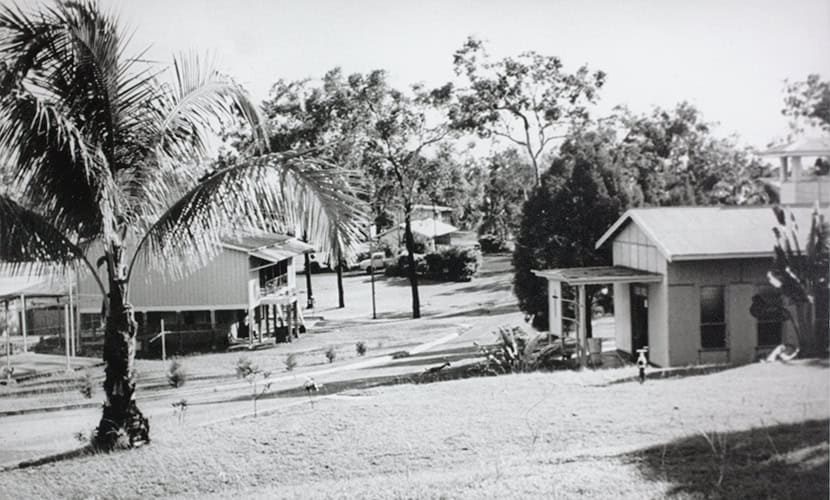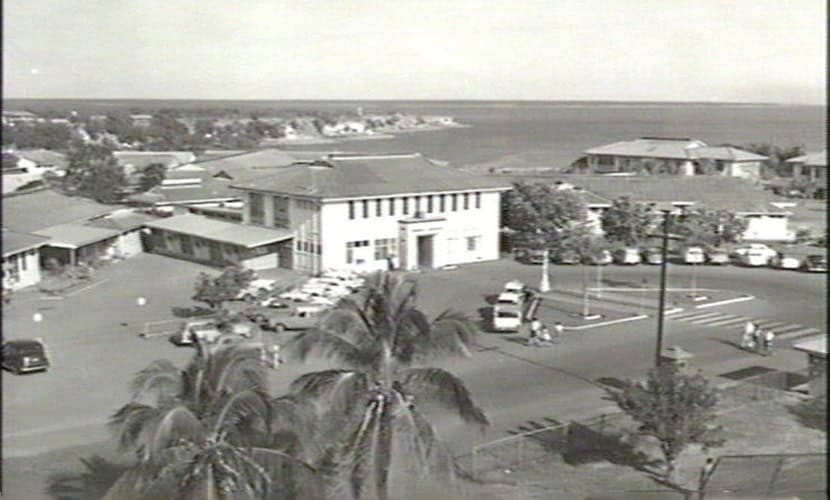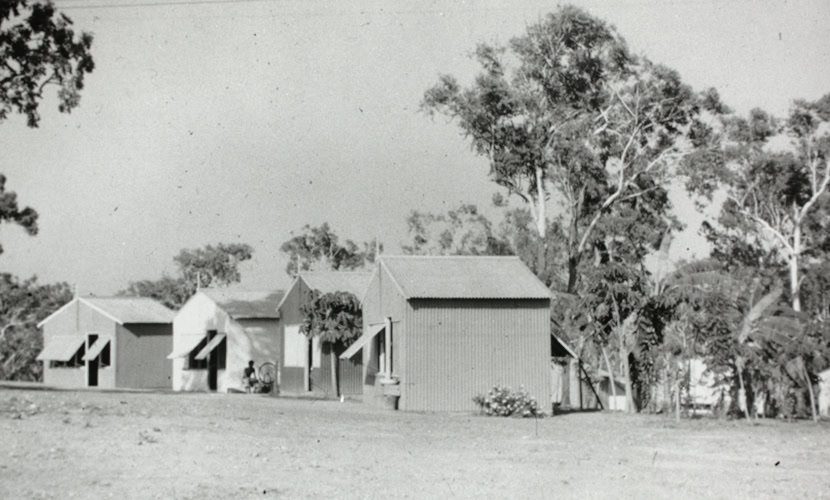


The East Arm Leprosarium
East Arm Leprosarium was in the bush just a few kilometres from Darwin. It opened in 1955, and was staffed by nursing sisters from the Order of Daughters of Our Lady of the Sacred Heart. By September that same year there were 180 staff and patients – some as young as four years old.
East Arm was a big improvement to the previous leprosarium on Channel Island. There was electricity, town water, access to telephones and a regular doctor. However, isolation and segregation were still mandatory government requirements, and the public openly expressed fear that the leprosarium was too close to Darwin.
Things started to change when Dr John Hargrave took over as Medical Superintendent of East Arm Leprosarium in 1959. There were 153 patients at the time, and very soon the culture of East Arm began to change. John established a leprosy register and set up an operating theatre. By 1962, he was performing reconstructive surgery on the deformities caused by leprosy. This was the first time this surgery had been performed in Australia. He transplanted tendons to correct foot drop and restored movement in fingers and thumbs. First Nations patients who were resigned to living with deformities for the rest of their lives were healed and able to lead active lives again.
John didn’t stop there. He set about training First Nations Peoples to screen and treat leprosy in their communities, and with this sharing of knowledge, they were able to better understand the disease and take significant steps in protecting their own health. John’s training was formalised by the Northern Territory Government in 1976, when the Aboriginal Health Worker training commenced. It continues to this day.
Dr Hargrave set up a sophisticated research laboratory to develop new blood tests for leprosy. He also used the lab to train young doctors in microsurgery starting with operating on rabbits. He trained several Aboriginal health workers in microsurgical techniques using the operating microscope. The Aboriginal health workers often assisted Dr Hargrave in the surgical theatre.